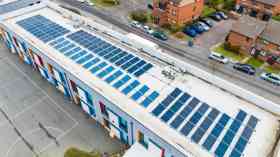Established in 1981, Micro Computer Consultants Limited (MCC Digital) are one of the UK’s most experienced Apple Authorised Education Speci
Supplier Focus
Latest Supplier News
Borg & Overström is a UK manufacturer of premium drinking water solutions. For over 20 years Borg & Overström has developed sustainable, bottle-less, hygienic, drinking water dispensers with the aim to provide exceptional, safe, self-service drinking water into schools, universities, workplaces and communal spaces.

 Obesity is on the increase with growing access to fast foods and a tendency towards less active lifestyles, and disappointingly it is England that has the fastest rising rate of obesity of any country in Western Europe. The latest Health Survey for England (HSE) data shows us that over 1 in 10 children under 10 in England are obese.
Obesity is on the increase with growing access to fast foods and a tendency towards less active lifestyles, and disappointingly it is England that has the fastest rising rate of obesity of any country in Western Europe. The latest Health Survey for England (HSE) data shows us that over 1 in 10 children under 10 in England are obese. 








